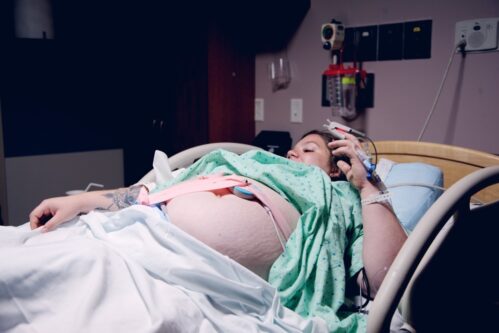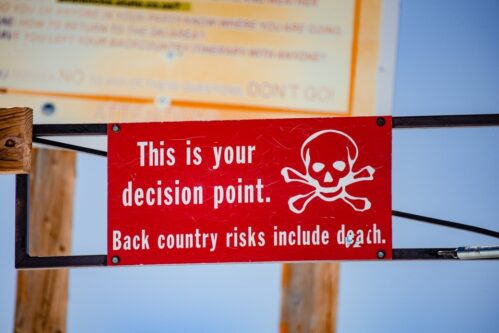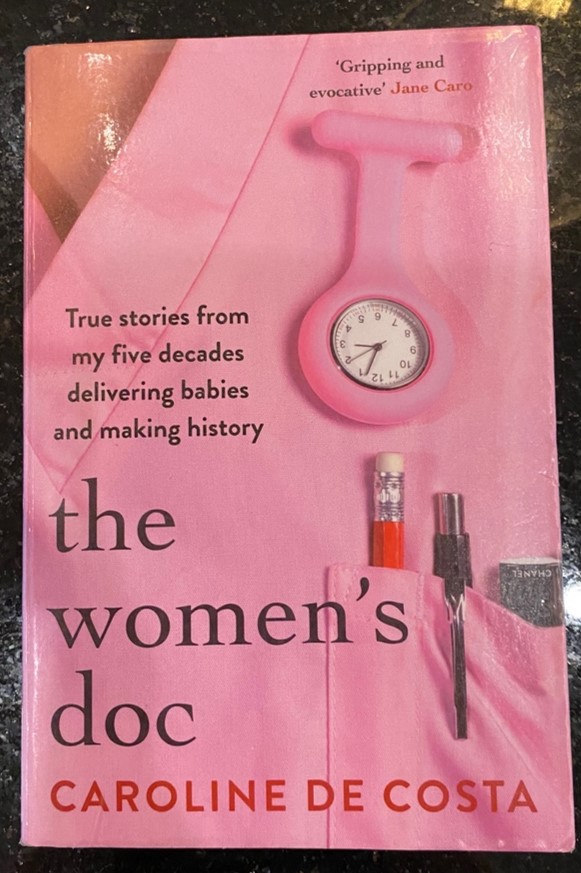Book – The Women’s Doc by Caroline de Costa.
Book Review written by doula Krista Cue.
Can you truly know what you believe if you don’t listen to opposing views?
The first time I read “The Women’s Doc” by Caroline De Costa, it was a struggle. It’s not that it wasn’t interesting or easy to read; on the contrary Caroline is a skilled writer. It was just that everything she said about childbirth collided headfirst with what I had learned and believed as a doula.
On my first read through, there were numerous occasions of me wanting to either burn the book or hurl it across the room! Being that it was a library book, I refrained from both and simply sat with my indignation; questions filling my mind.
Who’s the hero?
In Caroline’s opening chapter, she recounts her first experience of breech birth. The experienced obstetrician she was observing had it down to an art: mother’s legs up in stirrups; forceps at the ready; clock to count down the critical 4 minutes after the legs are out.
The education session starts with some sound advice to keep “hands off” until the mother pushes out the legs and lower abdomen. However, when the legs refuse to appear despite the mothers best purple pushing attempts, “hands off” soon turns into an episiotomy and some rather hands-on encouragement of the foot.
Another 3 minutes of skilled manoeuvres and the baby was out.
Caroline recalls her thoughts afterwards: “I was breathless from the excitement of it all. I wanted to be able to do that!”.
The obvious hero of the story here is the obstetrician and the concern (as raised by the author) is that less and less doctors today are learning these “skills”. This results in limited numbers of obstetricians “offering this service”, and if a woman presents to a public hospital for a breech birth the chance of the on-call doctor knowing how to deliver the baby are slim. In short: when we rely on the doctor being the hero of the story, they may not always rise to the occasion.

In stark contrast, a recent breech birth video from the NHS in the UK describes the hospital’s usual practice as completely hands off. This mother laboured on her knees in an upright position and even while the baby appeared to be hanging by its head, no one touched the baby, there was no coached pushing, no rushing. Only verbal reassurance from the midwife and physical support from the woman’s partner.
The birth attracted a lot of onlookers who I’m sure were also breathless with excitement, but in this case the words “I want to be able to do that” take on a whole new meaning. The mother becomes the hero.
Take two…
After the initial shock to the system (regarding the System), I decided to read the book a second time. This time focusing on the author’s heart of compassion for women and her desire for a better world. I read to understand her perspective on risk and why she advocates so strongly for common birthing interventions.
Trained to intervene
Caroline trained at Surgeons College. They train surgeons. And surgeons are trained to intervene and to save lives. And if you can intervene to save a life, why wouldn’t you?
Some might say the best intervention is education. Not educating women to have less babies, but rather, educating them on how to have as many babies as they want – “safely”. How to navigate risk and make empowered choices with good long-term outcomes as well as short-term.
According to Kathleen Olga Vaughan author of the 1930s book “Safe Childbirth: The Three Essentials”, the power of “safety” lies in the hands of the mother (and her mother and grandmother in terms of nutrition). All too often now, that power is transferred to the obstetrician and with it all responsibility.
Perception of risk
Studies have shown that people are less likely to take calculated risks when making a decision for another person. Our perception of risk changes simply because we feel responsible for someone else’s outcome. Likewise, when women hand their power and the responsibility for their birth over to an obstetrician (or a midwife or doula for that matter), they can expect that person to make decisions based on their own perception of risk.
If the woman doesn’t share the same perception of risk, handing over power and responsibility will lead her down a path she may not want to go. On the other hand, if a woman does share the same views of risk as the obstetrician, it can be a good match.

Short-sighted decision making
Over her life, Caroline advocated fiercely for wider access of the oral contraceptive pill and IUDs which have brought “sexual liberation” to thousands of women while simultaneously depleting their bodies of essential vitamins and minerals, robbing them of their God-given libidos and setting them up for years of anaemia, hormone imbalance and menopausal hell! A short-term win but at what cost?
The writer believes that “babies [should] come out easily vaginally or they [should] come out by caesarean”. Meaning don’t mess around with forceps and vacuums. In essence I agree, however in the current maternity system (and diet culture), women are not given the right tools to achieve the former. And so pelvic floor trauma, emotional trauma and caesarean rates (the assumed saviour of these women) continues to rise.
History…the good the bad and the ugly
Despite having differing opinions, what I loved about this book was the history. From the start the author keeps you captivated with stories dating back to the 1600s of women and men whose experiences and engineering skills have shaped the evolution of birth over the centuries.
As a self-proclaimed “women’s libber”, Caroline writes with a fire in her belly about many things affecting women over the past five decades – from reproductive rights to workplace equality. Her personal journey with such experiences helps the reader to empathise with these women and truly want change to take place.

Result for women
My hope is that women who read this book will do so with an open mind and that the stories will lead to a deeper questioning of why these interventions have become so pertinent to “safe” childbirth.
Has childbirth really been inherently deadly to mothers and babies from the beginning of time?
Is evolution really to blame for our narrowing pelvises and bigger heads?
How many of these women were laying on their backs during labour?
How many went into labour malnourished or depleted of vital nutrients (not found in a synthetic multi-vitamin capsule)?
My concern is that women will simply take the writer’s conclusions and corelations as applicable to all circumstances and allow fear to take root. This is often followed by distrust in our bodies and ultimately learned helplessness.
As Caroline so rightly points out, women have long been suppressed by the snake, men, religion and even each other. It’s time for women to come out from under “the curse of Eve” and be restored to the beauty and strength of their original design.
___________________________________________________________________
My name is Krista Cue, and I am an emerging doula who is training at the Doula Training Academy. If you would like more information about my doula services, please contact me:
Phone:
0490 253 248
Email:
[email protected]
Website:
www.nourishedmothers.com.au (coming soon)

